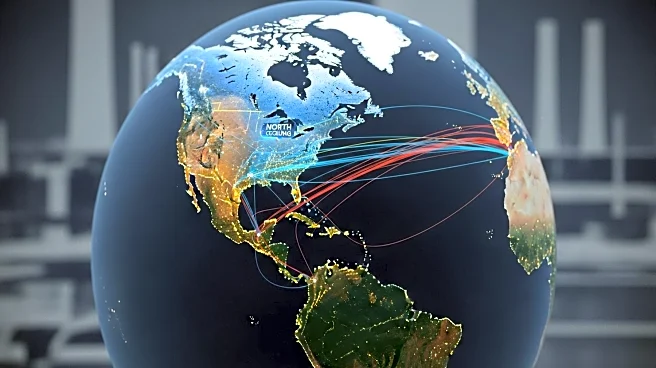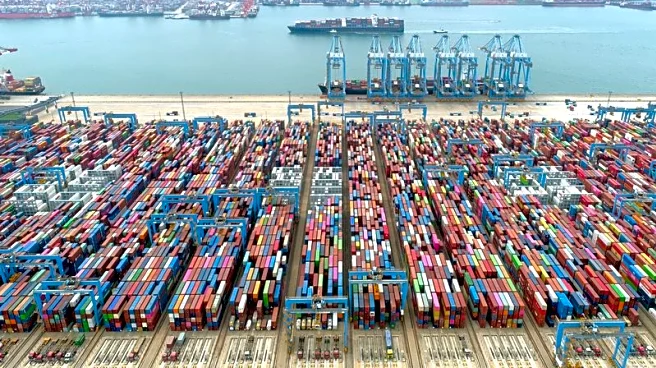What's Happening?
The GEP Global Supply Chain Volatility Index has reported a significant increase in purchasing activity by Chinese manufacturers in September, marking the strongest growth since mid-2022. This surge has propelled Asia's supply chains to near-full utilization. In contrast, North American manufacturing activity has cooled due to tariff-related disruptions and a weaker economic outlook, leading to reduced purchasing and inventory stockpiling. European supply chains remain sluggish, with activity at its weakest since March, as manufacturers in Germany, France, and Italy have scaled back procurement and stockpiles. The index, which tracks demand conditions, shortages, transportation costs, inventories, and backlogs, remained relatively unchanged at -0.38, indicating global supply chains are still operating below full capacity.
Why It's Important?
The developments in global supply chains have significant implications for U.S. industries and economic stakeholders. The slowdown in North American manufacturing activity could impact domestic production and employment, as companies face challenges in procurement due to tariffs and economic uncertainties. The robust purchasing activity in Asia, particularly China, may lead to increased competition for resources and influence global pricing dynamics. For U.S. businesses, adapting to these shifts is crucial to maintaining competitiveness and operational efficiency. The ongoing volatility underscores the need for strategic adjustments in supply chain management to mitigate risks associated with tariffs and economic fluctuations.
What's Next?
The next release of the GEP Global Supply Chain Volatility Index is scheduled for November 12, 2025, which will provide further insights into purchasing and inventory trends. Stakeholders will be closely monitoring whether Asia's manufacturing strength translates into broader global tightening over the coming months. U.S. manufacturers may need to reassess their strategies in response to these trends, potentially increasing domestic production or diversifying supply sources to reduce dependency on volatile international markets. The evolving economic landscape may also prompt policy discussions on tariffs and trade agreements to support domestic industries.
Beyond the Headlines
The current supply chain dynamics highlight deeper issues such as the impact of geopolitical tensions on trade and the need for resilience in global manufacturing networks. The reliance on Asian manufacturing, particularly China, raises questions about the sustainability of current supply chain models and the potential for future disruptions. Ethical considerations regarding labor practices and environmental impacts in manufacturing hubs may also come to the forefront as companies seek to balance efficiency with corporate responsibility. Long-term shifts could include increased investment in technology and automation to enhance supply chain resilience.












